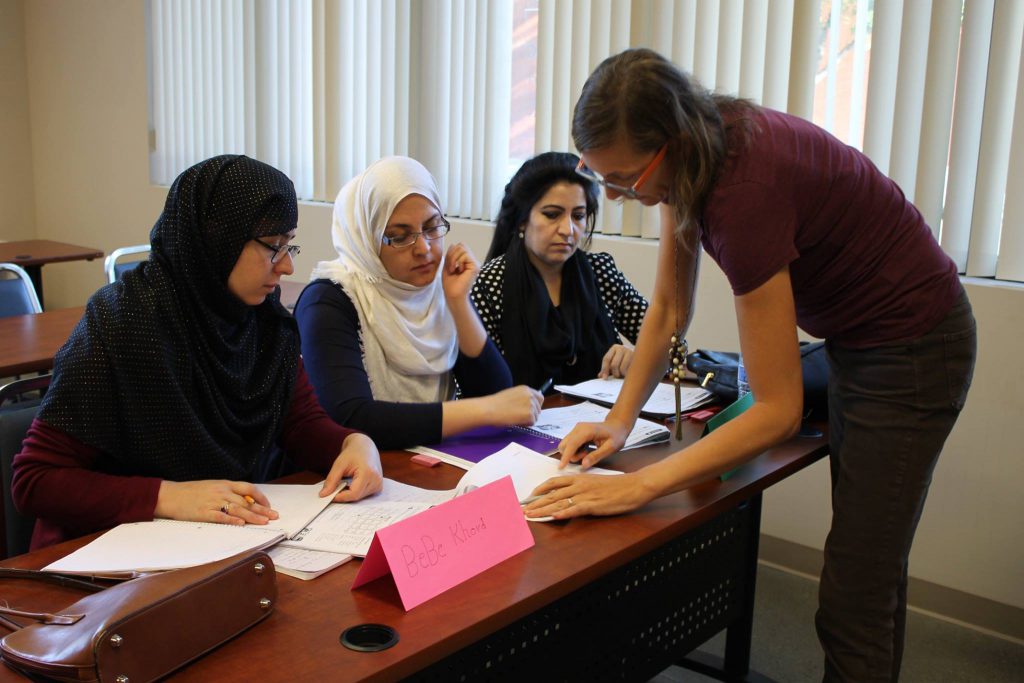Sacramento Food Bank & Family Services creates new neighborhood system to alleviate hunger
February 23, 2018
We do not offer food. Here’s where you can find food.
No distribuimos alimentos. Encuentre comida gratis aquí.
我們不直接提供食物,但我們能幫助您找尋食物。

Sacramento Food Bank & Family Services had a problem. When they took on the role of Sacramento County’s central food bank in 2014, they discovered a gap in service to an estimated 110,000 people. SFBFS knew they needed to rethink their food banking model. With the support of an advisory committee, SFBFS created the Neighborhood Food Access Networks. 13 Neighborhood Food Access Networks were established to understand and address food insecurity within specific communities.
Sonia Ran, SFBFS Emergency Food System Project Coordinator, took some time to answer questions on how the system came to be and how it operates.
How did the program come about? What was the motivation to create NFAN?
Neighborhood Food Access Networks were our answer to coordinating county food banking. When Sacramento Food Bank & Family Services first took on the role of Sacramento County’s central food bank, the network was cumulatively serving around 130,000 individuals on an average monthly basis. Feeding America’s Map the Meal Gap identified about 240,000 food insecure individuals, which left a gap of 110,000 people not receiving services. That stark reality coupled with the lack of synergy in the existing hunger-relief landscape pushed SFBFS with the support of an advisory committee led to the creation of the NFAN model. We wanted to facilitate a space for hunger-relief organizations serving in the same communities to come together and discuss how to increase collaboration, synchronize efforts, reduce duplication and ultimately reach all those in need in their communities.
How did you create the 13 neighborhoods? What data was used? What is the size, in terms of population, of each neighborhood? Are they roughly the same?
The 13 NFANs were created based on census tract level food insecurity data from Map the Meal Gap, poverty data from the American Community Survey, and our understanding of community borders and shared challenges throughout the county. Every NFAN is unique and has its own challenges to face; for example, they range geographically from rural, suburban to urban; population-wise from 50,000 – 250,000; in hunger-relief support, two partner agencies to 65 partner agencies; and in need met from severely underserved (10% need met) to over-saturated (150% need met).
Have you had successes with the program? Do you have any keys to success?
The implementation of this process started in February 2017 with NFAN 13 in the south part of the county and will continue throughout 2018. We wanted to make sure to respect the process and give the initial goals that the partner agencies work through time to develop and identify the most effective format for those conversations to take place. As of January 2018, we have five active NFANs meeting on a monthly basis working through community best practices; centralized delivery from SFBFS; schedule synchronization; comprehensive outreach plans; and diversity of hunger-relief programming.
The largest successes of this model have been in the immeasurable. The NFANs are a space for creating trust, communication, and collaboration in communities where that did not happen with the hunger-relief efforts before. Tangibly, we have established two on-going centralized NFAN deliveries where NFAN partner agencies can order online and have their food delivered to their community to reduce travel, shopping and labor time, and costs. Also, we synchronized food distribution schedules so an individual can access food at a variety of times during the day, week, and month. We even created community food distribution calendars in community-appropriate languages from Farsi and Russian to Spanish.
The key to facilitating these meetings, I have found, is to create an environment that empowers the partner agencies to define their challenges, needs, and solutions. As the facilitator, I am there to ask questions, present information in an objective way, and to track and guide action items. These NFANs are addressing the needs of the many different communities in Sacramento County. We regard the partner agencies as experts during these discussions whereas SFBFS is there to learn and support.
If you would like to learn more about the NFAN program and SFBFS, please check out the original article by Sonia Ran here.
Photo courtesy of Sacramento Food Bank & Family Services Facebook page.